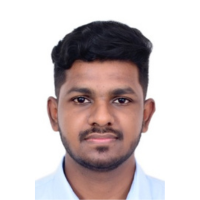2025 Agenda
Our team is hard at work curating an agenda for the 2026 Summit.
If you would like to present a case study or be part of a panel session at our Energy Storage Summit India, then please get in touch with the team today.
Speaker
India’s energy storage landscape is experiencing unprecedented momentum, with Q1 2025 alone witnessing tenders for 9.5GW of utility-scale Energy Storage Systems (ESS) – surpassing the entire capacity tendered throughout 2024. Notably, standalone systems account for nearly two-thirds (64%) of these tenders, signaling a significant shift in deployment strategy. The government’s expanded Viability Gap Funding (VGF) scheme has emerged as a critical catalyst for this growth. Following the substantial decline in battery prices, the scheme has dramatically increased its support for Battery Energy Storage Systems (BESS) from an initial 4,000 MWh to an ambitious 13,200 MWh. This expansion offers developers up to 30% capital cost subsidy, capped at ₹4.6 million per MWh, fundamentally transforming project economics across the sector.
- How are recent policy updates supporting or slowing BESS adoption in India?
- What are the current gaps in India’s ESS tendering process and how can they be addressed?
- Are government incentives aligned with long-duration and short-duration storage needs?
- How can India structure tariffs and subsidies to compete globally?
Moderator
Speakers
- What does SolaX bring to the market?
- What does the BESS market landscape look like in India?
- What are the primary challenges and requirements for BESS implementation in India?
- How do SolaX solutions address India’s specific BESS needs?
- What can we learn from SolaX’s global success stories?
Speaker
The energy storage landscape is undergoing a dramatic transformation, with battery prices plummeting 31% between 2022 and 2024. This steep decline is rapidly enhancing the economic viability of Battery Energy Storage Systems (BESS), with forecasts indicating further cost reductions from $95/kWh in FY 2025 to $68/kWh by FY 2030. Particularly noteworthy is the lithium-ion battery segment, where pack prices experienced their most significant annual decrease since 2017, falling 20% to reach $115/kWh in 2024.
As this cost revolution unfolds, it creates both opportunities and strategic imperatives for India’s emerging battery manufacturing ecosystem.
- What does India need to do to match China’s battery supply chain dominance?
- How will US tariffs and Inflation Reduction Act policies impact Indian export potential?
- What are the infrastructure gaps India must close to become a reliable exporter?
- How are CXOs planning to localize manufacturing while maintaining global quality standards?
- What government support is needed to attract global anchor clients?
Moderator
Speakers

- What PCS brands are compatible with your BESS?
- What are the benefits of being a cell manufacturer as is the case with Trina Storage?
- What are the benefits of the 587Ah cell, 6.25MWh container which comes with higher energy density?
- How does the G2 Pro benefit the developer as compared to standard G2 Elementa 2 product?
- What is the service organisation in India like for Trina Storage?
Speaker
India’s energy storage sector is transitioning from pilot projects to large-scale commercial deployment, driven by the rapid rise of renewable energy and evolving grid requirements. How far along is the market in terms of installed capacity, pipeline projects, and regulatory readiness?
- How is India’s energy storage strategy evolving to prioritize national energy security alongside project economics, particularly given that only 16% of current generation capacity comes from energy storage systems while the majority relies on traditional hydro?
- What role should thermal storage and other LDES technologies play in India’s future energy storage mix compared to battery deployments?
- How do the lifetime costs of medium and long-duration energy storage technologies compare in the Indian market context, and what financing mechanisms are emerging to support their deployment at scale?
Moderator
Speakers

Tariffs have plummeted from ₹1.08 million (~$12,570)/MW/month in 2022 to a mere ₹221,000 (~$2,550)/MW/month in recent tenders. This precipitous 40% decline compared to non-VGF projects represents not just a pricing adjustment but a fundamental market realignment that could accelerate India’s energy transition timeline. Reduced import duties create more favourable CAPEX environment, potentially unlocking a new wave of investment in a sector previously constrained by economic viability concerns.
- How have global battery supply chain developments contributed to the tariff reductions?
- With CAPEX requirements significantly reduced, what new financing models are emerging?
- How do India’s current BESS tariffs compare globally, and what does this mean for the country’s position in the international energy storage market?
- What technologies are winning in this new price environment?
- What is your forecast for BESS tariffs over the next 3-5 years? Will we see continued declines or stabilization?
Moderator
Speakers

- How are data centers and IT parks integrating battery storage to ensure uptime?
- What are the unique needs of industrial offtakers compared to utilities?
- Can commercial and industrial (C&I) users aggregate demand to make storage cost-competitive?
- Which industrial sectors are most prepared to adopt behind-the-meter storage?
- What models can drive adoption among small and mid-sized manufacturers?
- What’s the ROI outlook for battery deployment in process-heavy industries?
Moderator
Speakers
Speaker
The Indian Battery Energy Storage System (BESS) market stands at the cusp of extraordinary growth, with projections indicating an expansion from ₹650 billion (USD 7.8 billion) in 2024 to a remarkable ₹2.67 trillion (USD 32 billion) by 2030. This represents a robust Compound Annual Growth Rate (CAGR) of 27% during the 2025-2030 period, creating unprecedented opportunities for investors, developers, and financial institutions across the energy storage value chain. As this market quadruples in size over the next six years, innovative financing structures will be essential to unlock capital at scale and accelerate deployment across utility, commercial, and industrial applications. The evolution of these financial mechanisms will fundamentally shape India’s energy transition landscape and determine which stakeholders capture value in this rapidly expanding sector.
- What are the dominant financial models emerging in India for BESS?
- How can debt providers be educated on ESS revenue models?
- What are realistic expectations for revenue stacking in the Indian market?
- How can concessional finance accelerate early projects?
- Are SPVs or leasing models better suited for the Indian context?
Moderator
Speakers
- What are the key considerations when choosing between borrowing, buying, or building BESS assets?
- How do land acquisition and permitting affect deployment timelines in India?
- What role should EPCs play in long-term asset ownership models?
- How do grid integration challenges vary across Indian states?
- How can developers manage evolving technology risk during long-term contracts?
Moderator
Speakers
How effectively can the batteries and other energy storage systems originally designed for peak shaving also serve real-time applications like demand-side management (DSM) or frequency response?
- Can one battery system serve both peak shaving and fast-response DSM without compromising lifecycle or cost?
- How do lithium-ion and alternative chemistries perform under India’s varied climatic conditions, from coastal humidity to desert heat?
- Which storage technologies are best suited for long-duration balancing vs. short-term grid response in the Indian context?
- What are the key innovations in thermal management and BMS to extend battery life and improve safety?
- How can hybrid systems be optimized for multi-service functionality on the grid?
Moderator
Speakers
Fraunhofer headquartered in Germany, is the world’s leading applied research organization. Across the battery sector, more than 26 Fraunhofer institutes provide extensive research infrastructure and cross institute expertise, offering numerous entry points along the circular battery value chain – from materials and cell production to battery systems and recycling – and delivering cross cutting services such as battery testing, simulation, digitalization, and techno economic assessment. This holistic approach, combined with application-oriented battery research, bridges the gap between scientific findings and their practical implementation in industry.
Fraunhofer will present a concise overview of dry coating technology, focusing on DRYtraec® – an electrode manufacturing technology developed at Fraunhofer IWS Dresden. The presentation will provide technical insights and showcase recent applications in electrode manufacturing for state-of-the-art lithium‑ion and next‑generation batteries.
- Comparison of state-of-the-art electrode coating and different dry battery electrode technologies
- Application of dry battery electrodes in Lithium Ion, Sodium-ion, Solid State and Lithium Sulphur battery technologies
- Sustainability and new concepts
Speaker

- Is India’s BESS market already saturated for early movers?
- How much will CAPEX/OPEX fall in the next 5 years—and should that affect timing?
- Can first movers establish strategic partnerships that late entrants can’t?
- How can companies manage risks of regulatory uncertainty while entering early?
- What technologies should developers monitor before making large-scale entry decisions?
Moderator
Speakers








































